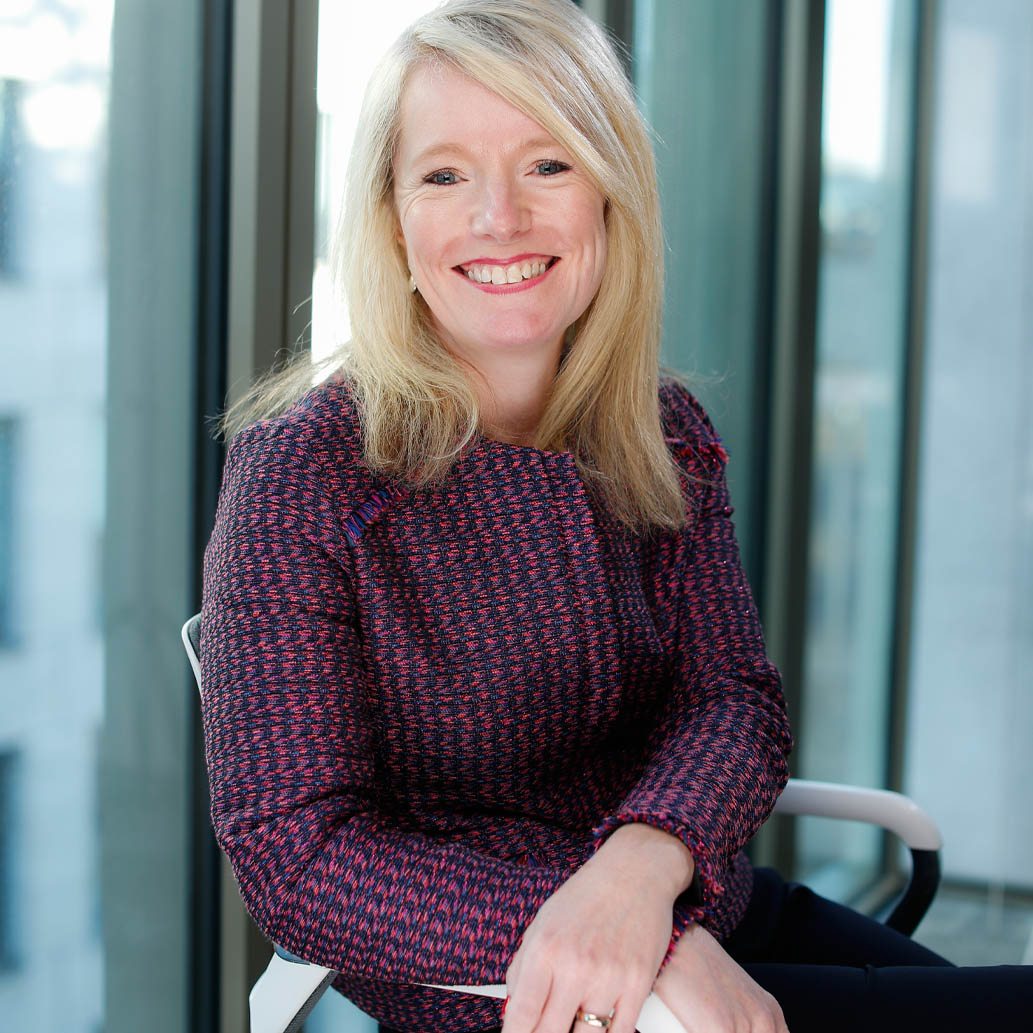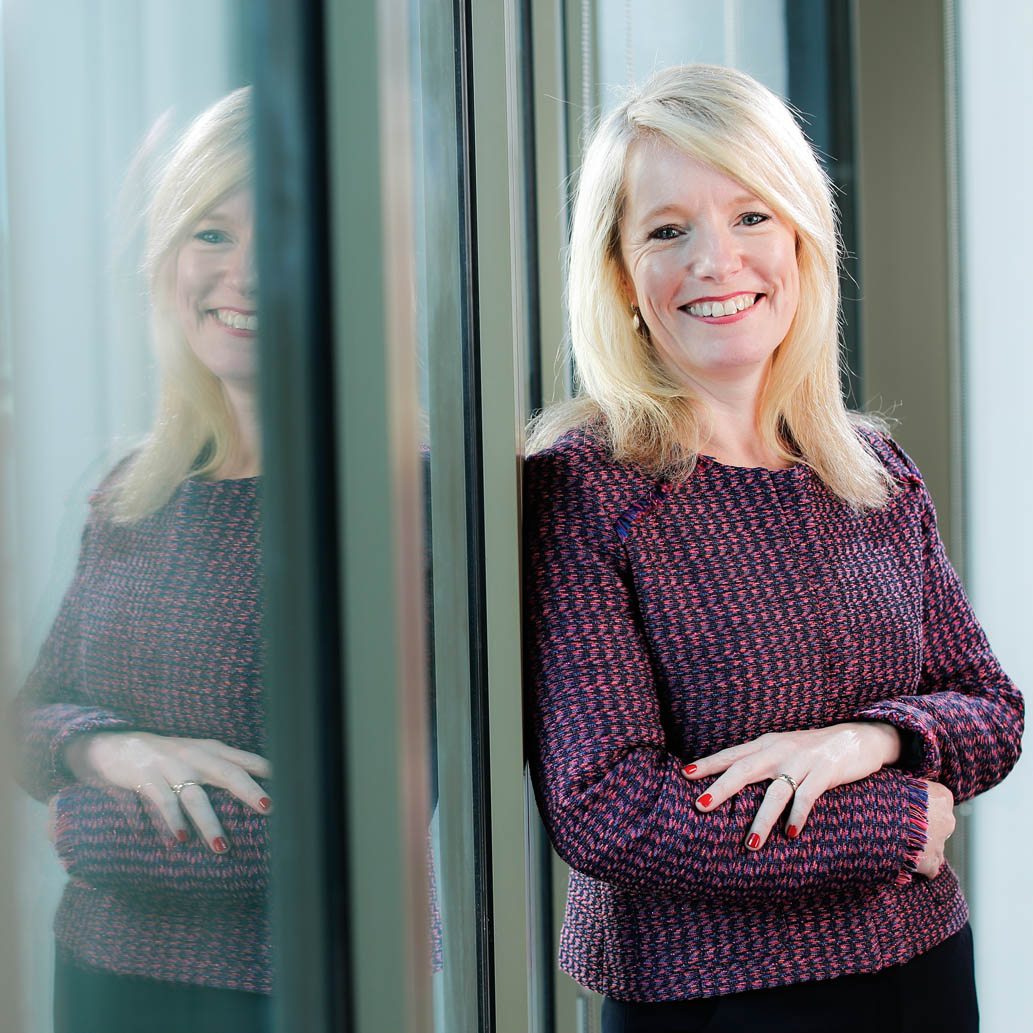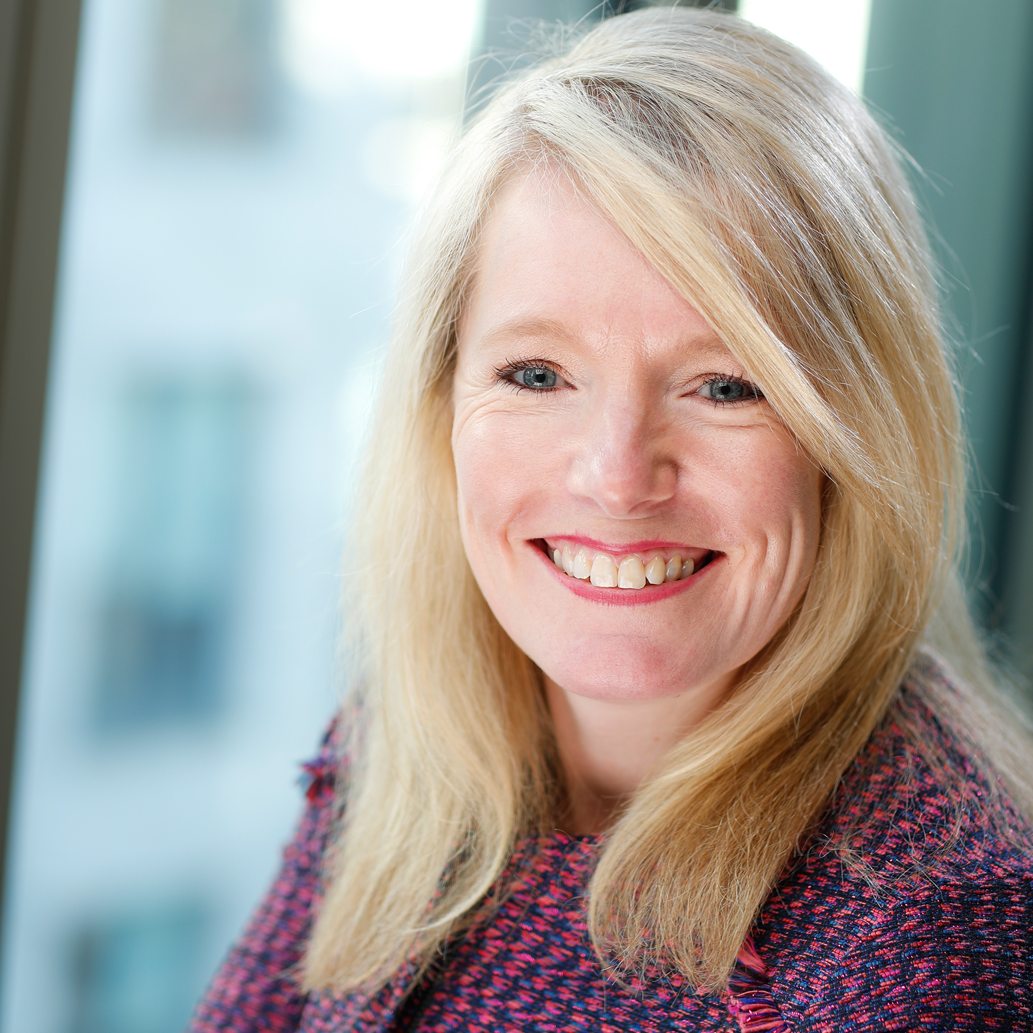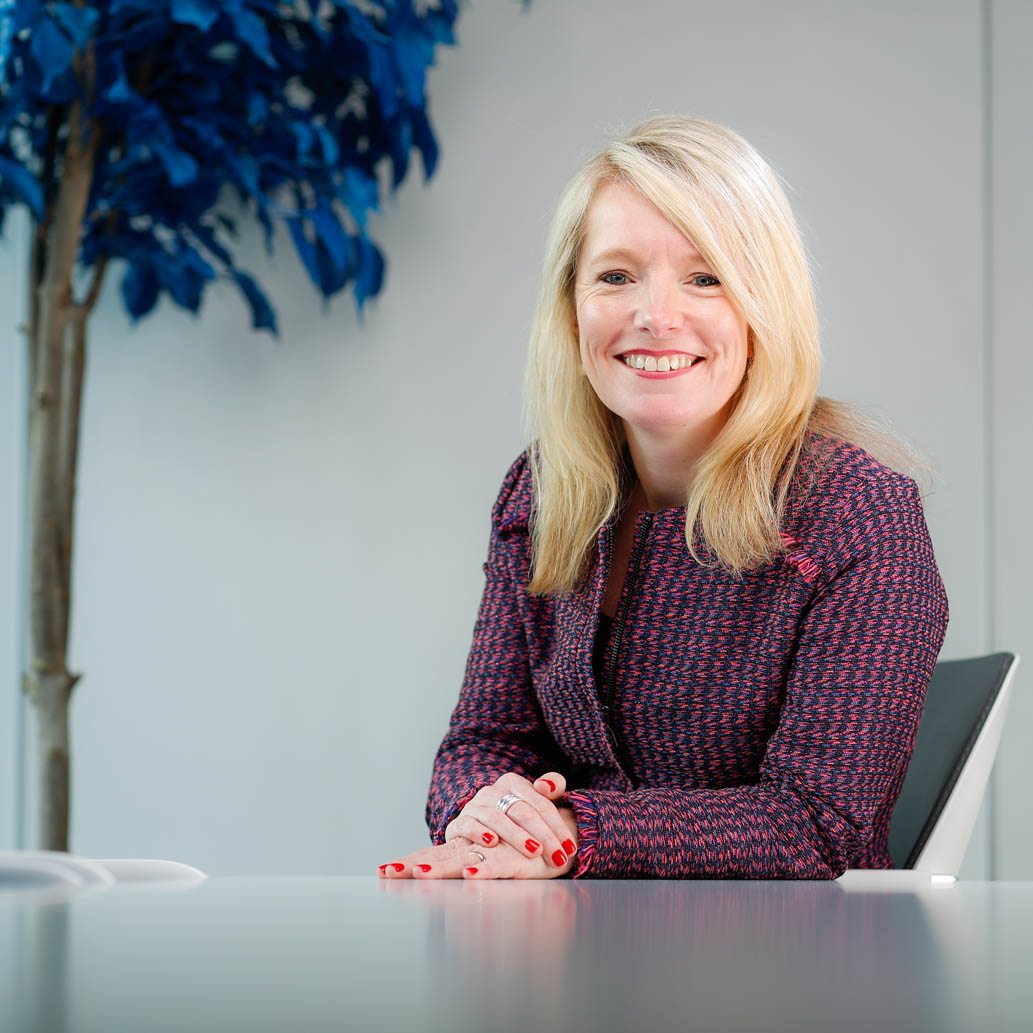Rachel, give us an idea of your early life and career and what appealed to you about HR?
I was very fortunate growing up in a really close family, and I was always able to seek great guidance from mum and dad. I went to a grammar school, but I was usually near to the bottom of the class – everybody seemed smarter than I was, including my friends. Nevertheless, and testament to both my school and parents, I left with all my O’ levels. My mum and dad were very proud, surprised and probably relieved. My early ambition was to go to an art college, because I thoroughly enjoyed sketching and painting and, dare I say, I had a talent for it. However, my headmistress had other ideas, she knew a director at Lloyds bank and encouraged me to go for an interview for a job – and I guess they must have liked me because they offered me a job on the spot! My parents, as always, were very supportive and encouraged me to “go for it”. So I started as a cashier in the Reading branch at the age of just 15 – that was in August 1986 – unbelievably, 30 years ago!
As well as assisting customers on the shop floor of the Reading branch, I took on some administrative duties in the back office. It was around this time that banks started changing their operating models towards sales and I soon became the Sales Coordinator. Despite my age at the time, I was given a lot of autonomy and before long I was running little marketing campaigns. Of course, practically everything back then was manual and on paper, a far cry from the way things are done now. But I really enjoyed this role and took my early responsibilities very seriously. The role really suited me, as I was gregarious and able to develop relationships, and the autonomy was liberating. However, my role changed again, when I was drawn to an internal advert looking for a regional trainer. I applied for the role, was successful and, after sailing through the training, I packed my flipcharts and pens, and I drove around north and central England, visiting many branches. I met and trained so many people in; sales, service and interpersonal skills and it seemed like I was always travelling, but I loved it. I worked in this role for a number of years and I could have worked more, but the way that banks were operating was beginning to change fast, which meant jobs had to change and adapt – creating new opportunities. In particular, admin work was being taken out of branches and moved into large service centres. I applied internally for the post of managing the Business Banking and Telephony team at the Reading service centre, and this was the first time I was responsible for setting up and managing large numbers of people.
The changes were not universally loved, and there was a good deal of resistance from people within the branches. They were worried about their jobs and what the impact might be on the quality of service for customers. They were very vocal about how they felt too, and I had never experienced these tensions before, so this was really my first experience of being part of a change that generated a fair degree of uncertainty and sometimes negative sentiment. Once the service centre had been up and been running for some time, I applied for a job advert internally, for a post in HR, after realising that the part of the role I really loved was the challenge of managing people. I succeeded in getting the job and my HR career kicked off from there. Since then, I’ve been a HR business partner for just about every function in the bank. But it was working in the branch network in London where I really honed my HR skills. There was so much variety in the role – it gave me a really broad set of skills and experience. I took my first HR Director role in Group Operations within Lloyds Banking Group, then subsequently, HR Director for Mortgages. Then came the Lloyds and HBOS merger, and I was asked to go for an interview to be Executive Assistant for the then HR Director, Angie Risley. Some questioned why I wanted to take the role, but I did it for two and a half years and, in terms of learning, this could not have been a better role. I learned so much under Angie’s guidance and the role gave me a real feel for how a bank really works. One moment I was working on strategy and the next I was looking after guests and making sure they had a nice cup of tea. No two moments were ever the same and the role was great for my development. I read everything from risk committee papers to board papers. I was able to learn how assets and liabilities work too. I was exposed to capital raising, recruited executives at the highest level and even exited some! Securing that knowledge and experience was totally pivotal to my career and I often feel that I would not be where I am today without it.
Then, out-of-the-blue, I received a call from Paul Pester, the CEO of TSB, asking if I would like to meet to discuss an exciting new opportunity, the possibility of taking on the role of HR Director for the Verde Project. After 26 years at Lloyds, diversifying and perfecting my craft, I thought “if not now, when”? So, I wanted to hear more. I will never forget the meeting with Paul, there was a lot to take in. He shared many details and exciting ideas, but there was one thing he said that really piqued my interest, the idea that if I accepted the role of HR Director at TSB, I would have an opportunity to create a completely new culture from scratch. I would have the opportunity to explore in depth what needed to be done to re-connect customers with their bank and to provide an environment in which people enjoyed working. Paul created a vision that was compelling and genuinely different. I honestly feel that I have the best HR role in the country. I’m also fortunate to have a great team around me, as the business supports what we do and we also manage to have a lot of laughs along the way.
To stay in one sector for 30 years, you must have seen so many changes in banking.
It is no exaggeration to say that today, banking is unrecognisable to when I first walked into the Reading branch in 1986. The evolving technology, the customer relations, the call centres, the environment of sales through the 1990s, the centralisation and, of course the economic meltdown. In many ways its come full-circle in so much as, TSB in its current incarnation, was really born out of the banking crisis. In the middle of this crisis, Lloyds was instructed to split off 631 branches and create a new competitor bank – and the idea for launching TSB back onto the high street was born. This was an opportunity to design TSB in a way which mitigated the issues that had distanced banks from their customers. There was a lot to do, and crucially, everything we planned to do had to be authentic and create impact. We asked customers straight talking questions, such as: “what don’t you like about banks”? We had to get to the bottom of it because the distrust was deep and ingrained with PPI and miss-selling scandals, service issues or reward for failure. In particular, customers expressed their deep mistrust of the bonus culture in the sector. So, given as a business we were starting out as a completely blank sheet of paper, we set about planning what the bank would be, what customers wanted it to be, what it would represent and how it would operate, using this vital insight from customers. We had the opportunity to put in practice the values that we deeply believed and designed them based around our customers’ views and expectations.
Our main focus was to nurture a culture that was transparent, responsible in all our dealings – never again lending customers more than they can afford – and collaborative too – talking to customers on their terms and not ours. And right at the heart of it, we stripped out all sales targets, and this redefined our focus and values. When we broke away from Lloyds there were about 30 different reward schemes based on targets. We took out all the bonus schemes and we put in a flat, TSB award, based on profit share. If the company doesn’t make a profit it won’t pay out, then it’s a flat reward of ten percent for everybody. I genuinely thought that would be one of the most difficult changes to make, but an indication of how deep things were felt, there were very few blockers. We have complemented that with looking at performance on a bi-annual basis and we have introduced the “TSB experience” into training, which essentially is about customer experience, whether that’s on a one to one basis or the way they are informed on a mobile app. There is no ambiguity. In terms of systems, it’s been well published that TSB gets its IT support from Lloyds. We are going to migrate onto the Sabadell platform next year – that is when we can truly become pioneering.
The way you describe it, the change has been massive and wholesale, and the fact that there was little resistance to changes in reward will surprise many.
It was the original culture that caused problems, that was plain to all. But the catalyst to change was the very public way it played out and, crucially, this happened as the new generations were coming into the business and they appreciated this change very much. That has been the fuel to get us to where we are today. But that doesn’t happen by accident. And in that respect, I have been impressed by what Paul Pester has brought to TSB. It goes back to when he first joined and, at the Excel Centre in London, met all the branch managers for the first time. At first, he had been given a speech to apologise to everyone for having to come out of Lloyds. And then he had a re-think, and instead he congratulated them and set out a really inspirational vision for the future and how we were going to achieve it. He won hearts and minds from that day and has been right on the bow of the boat as we’ve worked our way through the changes, communicating and exemplifying what the messages represent. Every fortnight Paul has a ’Stand Up’ session where he gives a talk to everyone in the company and it’s always an inspirational listen, about what’s on his mind, what TSB has been up to and what’s coming up. There’s no topic he won’t cover, but from a HR point of view, his honesty is compelling and does a lot to drive engagement. Paul also does a video blog and we open up for questions, where the rule is simply:’ be honest’. Every year we host an internal conference for our Partners and we put on a real show. We make sure it’s a good cross section of grades and roles. All the execs get up on stage; everybody gets stuck in and embraces it. We keep our communication water wheel turning and listen to each other – that’s how you really build an engaged team. It is working – our engagement score is up by two points to 78. We have also partnered with Best Companies, Great Place to Work, and our Partners have not just embraced change, they champion it. But you cannot stand back and admire your handy work; the hard work is being consistent and agile to change.
The old tradition of banking was the bank manager and the customer, a very personal relationship, with fewer banks on the high-street, that’s surely more difficult to pull off online.
It’s different for sure, but I’m optimistic there will still be a presence on the high street. It’s undeniable that the digital relationship with customers is shaping how banks operate – for example, at the moment our partners are trialling our new mobile app before its official release to customers, guaranteeing that it integrates many personal features, it’s organic and grows side by side with the customer. However, if you look at the brand footprint, although the trend for the majority of banks is to reduce their branch presence and invest in digital, I truly believe that both are complementary and not a substitute for each other.
For decades, the idea for banking was about aggression and risk and before the crash, that was very successful, albeit for all the wrong reasons. Can empathy really step into the banker’s shoes?
The key word is responsibility. If you look at what our CEO has said about the recent investigation into competition in retail banking, he has publicly talked about his disappointment that the Competition and Markets Authority hasn’t gone far enough and doesn’t provide enough scope for competitive challenges. We have made suggestions, such as providing banking customers with a regular bill setting out how much they pay for the services they receive, so that consumers are equipped with the right information to choose the best provider for their individual needs. And if you do the right things, customers will be appreciative and as a consequence they will choose TSB. Pleasingly, our results are strong, which demonstrates that aggression and big risk are unnecessary. I was reading about the importance of SMEs on the future of the UK GDP and their relation with other banks. That relationship is fundamental. That’s something we intend to galvanise and expand. I believe that with the migration of the customer platform to Sabadell and with them behind us, we are in a good position to excel in this area.
Much has been achieved, much has happened, so what does the future hold for TSB now? I am very confident about TSB’s future.
I feel that we have successfully managed different organisational changes and this has equipped us with the right set of skills, learnings and experiences – as well as the ability to change and adapt to the new opportunities and challenges they presented. For example, when Paul said to me one day that we were going to do an IPO, this was something I had no experience of and had to learn very quickly Shortly after that transaction was completed, he announced that a Spanish bank called Banco de Sabadell was going to acquire TSB – so the pace of things can be like trying to stabilise things on a rollercoaster ride at times. However, Sabadell’s strong commitment to the UK since day one has not changed and they’re really proud of TSB. I am confident that we will grow together and continue to focus our efforts on customer’s satisfaction and seek out the new opportunities this partnership will open up. As an industry, we are going through an exciting yet challenging period right now but I am confident our strategy will be undeterred as long as we stay loyal to our values and commitment with the UK.
Let’s move on to diversity on the board. This really is a big gain for HR, businesses are radically improving. What’s your experience?
Diversity and Inclusion is one of our big strategic priorities. We currently have three women on our board and on the executive team we have four. It creates a different conversation around the board table. In terms of our workforce as a whole, the number of women outweighs the number of men. We have a significant number of women in our branches, partially because we offer many flexible working arrangements to help them balance their work and personal life commitments. We are increasing the number of senior women in our senior management roles and we have set ourselves the goal of achieving 45-55 percent by 2020. Although gender is central to our Diversity and Inclusion strategy, there’s much more to it than that. We have an inclusion network with various work streams, each headed up by senior executives who have a responsibility to promote it and affect real change. We are asking the senior executives to demonstrate our passion for inclusion and cascade that throughout the entire organisation. We believe that part of making TSB a great place to be is being able to bring your own self to work and perform on your terms.
It certainly is encouraging, when you started out, banking was undoubtedly the proverbial all-white, middle-aged male brigade.
Yes and I feel very proud about the changes we have achieved and hugely optimistic for the future. There is a great change in culture, but again the big changes are going to take a lot of work before they become organic and fully- embedded. A case-in-point being paternity leave, men still feel that they cannot step off the treadmill for a year, for fear of being left behind, as things change so fast. So we are actively looking at how we can support that, and I think there is a big change generally in the way businesses operate, the way people work, along the lines of the gig economy and HR has such a fundamental part to play. There’s much been debated about the career ladder that is no longer a ladder. We also have to address the attractiveness of banking as a career choice for today’s young people setting out on their career paths. We continue to be able to attract key talent into TSB and our attrition is stable as people believe in what we are doing and how we are different and they want to be part of that. On the other end of the scale, we have people joining us from big banks who find the exposure that TSB gives to each individual challenging at first, but I believe that this is key for our growth and our appeal as an employer.
You've achieved a good deal, what do you hope for in the next couple of years, that will continue to be a game changer?
We have talked about the change in nature of the employee and business relationship. We made everybody Partners and our employees are called Partners and our future lies in continuing to embed that relationship. It’s about evolving our strategy and keeping it consistent, whilst providing different opportunities for people within TSB. It’s about giving our people challenges and opportunities to work in different ways and creating an agile workforce. I would say that these are my top priorities. We have so many committed and enthusiastic people here and I want it to stay that way. I want to distinguish how TSB is different and innovative. For example, we are currently partnering with Pride of Britain, whose main aim is celebrating ordinary people doing extraordinary things and supporting local communities all over Britain. For TSB, my aim is no different, I want us to continue recognising people’s efforts and supporting them throughout their TSB journey, putting customers and Partners at the heart of everything we do.












